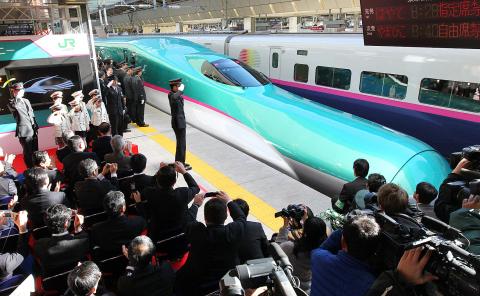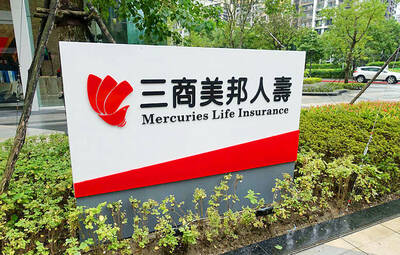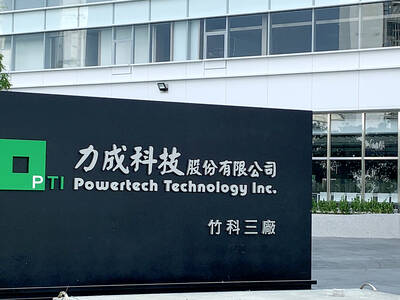Japan’s latest bullet train, the thin-nosed Hayabusa or Falcon, made its 300kph debut yesterday, boasting a luxury carriage modeled on airline business class.
Japan has built up a network of cutting-edge Shinkansen train lines since the 1960s that criss-cross the island nation and now hopes to sell the infrastructure technology abroad, including to the US.
The latest ultra-fast tech marvel will make two trips a day from Tokyo to Aomori, a scenic rural backwater on the northern tip of the main Honshu island that has until now been off Japan’s bullet train map. It will also make one more trip a day to Sendai, located between Tokyo and Aomori.

Photo: AFP
Mutsutake Otsuka, chairman of East Japan Railway Co (JR East), stressed the engineering sophistication of the new ride.
“To the best of our ability, we will strive to improve Hayabusa’s passenger comfort, safety and -environmental friendliness, not just its speed,” he told hundreds of people who came to Tokyo station to see the futuristic train.
The mood at the launch was dampened slightly by a seven minute delay to the first service after a passenger fell from the platform at Tokyo station, where more than 1,000 train hobbyists rushed to take pictures.
The train was not moving at the time and the man climbed back up to the platform unaided.
The green-and-silver E5 series Hayabusa travels at up to 300kph to make the 675km trip to Aomori in three hours and 10 minutes. From next year, it will push its top speed to 320kph to become Japan’s fastest train.
Passengers will glide quietly along the straight stretches and tunnels that cut through Japan’s mountainous countryside, said JR East, which has heavily promoted the launch of the new service.
Those willing to pay ¥26,360 (US$320) for a one-way trip can enjoy the comfort of a “GranClass” car, where a cabin attendant will serve them drinks and food in their deeply reclining leather seats on thick woollen carpets.
To promote the service, the train company has also heavily advertised Aomori as a tourist destination, praising its landscape, seafood and winter snow.
Japan’s ultra-fast, frequent and punctual bullet trains have made them the preferred choice for many travelers, rather than flying or road travel, ever since the first Shinkansen was launched in time for the 1964 Tokyo Olympics.
However, as Japan, and its railway companies, struggle with a fast-graying and shrinking population and falling domestic demand, the government and industry are aggressively seeking to promote the bullet trains abroad.
Japan has in the past sold Shinkansen technology to Taiwan and hopes to capture other overseas markets, such as Brazil and Vietnam, but faces stiff competition from train manufacturers in China, France and Germany.
The biggest prize is a future high-speed US rail network that US President Barack Obama has promoted, to be backed by US$13 billion in public funding.
California’s then-governor Arnold Schwarzenegger was treated to an early test ride on the Hayabusa when he visited Japan in September.
Japan has also been developing a magnetic levitation or maglev train that, its operator says, reached a world record speed of 581kph in 2003 on a test track near Mount Fuji in Tsuru, west of Tokyo.
The plan is to launch maglev services between Tokyo and the central city of Nagoya by 2027. By 2045 they are expected to link Tokyo with the main western city of Osaka in just 67 minutes, compared with the current two hours 25 minutes.

Mercuries Life Insurance Co (三商美邦人壽) shares surged to a seven-month high this week after local media reported that E.Sun Financial Holding Co (玉山金控) had outbid CTBC Financial Holding Co (中信金控) in the financially strained insurer’s ongoing sale process. Shares of the mid-sized life insurer climbed 5.8 percent this week to NT$6.72, extending a nearly 18 percent rally over the past month, as investors bet on the likelihood of an impending takeover. The final round of bidding closed on Thursday, marking a critical step in the 32-year-old insurer’s search for a buyer after years of struggling to meet capital adequacy requirements. Local media reports

US sports leagues rushed to get in on the multi-billion US dollar bonanza of legalized betting, but the arrest of an National Basketball Association (NBA) coach and player in two sprawling US federal investigations show the potential cost of partnering with the gambling industry. Portland Trail Blazers coach Chauncey Billups, a former Detroit Pistons star and an NBA Hall of Famer, was arrested for his alleged role in rigged illegal poker games that prosecutors say were tied to Mafia crime families. Miami Heat guard Terry Rozier was charged with manipulating his play for the benefit of bettors and former NBA player and

The DBS Foundation yesterday announced the launch of two flagship programs, “Silver Motion” and “Happier Caregiver, Healthier Seniors,” in partnership with CCILU Ltd, Hondao Senior Citizens’ Welfare Foundation and the Garden of Hope Foundation to help Taiwan face the challenges of a rapidly aging population. The foundation said it would invest S$4.91 million (US$3.8 million) over three years to foster inclusion and resilience in an aging society. “Aging may bring challenges, but it also brings opportunities. With many Asian markets rapidly becoming super-aged, the DBS Foundation is working with a regional ecosystem of like-minded partners across the private, public and people sectors

BREAKTHROUGH TECH: Powertech expects its fan-out PLP system to become mainstream, saying it can offer three-times greater production throughput Chip packaging service provider Powertech Technology Inc (力成科技) plans to more than double its capital expenditures next year to more than NT$40 billion (US$1.31 billion) as demand for its new panel-level packaging (PLP) technology, primarily used in chips for artificial intelligence (AI) applications, has greatly exceeded what it can supply. A significant portion of the budget, about US$1 billion, would be earmarked for fan-out PLP technology, Powertech told investors yesterday. Its heavy investment in fan-out PLP technology over the past 10 years is expected to bear fruit in 2027 after the technology enters volume production, it said, adding that the tech would